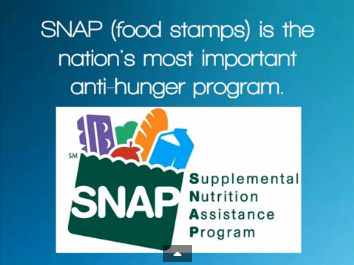It has been 50 years since the Food Stamp Program, now known as Supplemental Nutrition Assistance Program (“SNAP”), has been in permanent effect. Since 2008, SNAP is the new name for the previous known federal Food Stamp Program. Did you know that in 1961 President Kennedy signed his first Executive Order which initiated the Food Stamp pilot programs? Did you also know that in 1964, President Johnson made the Food Stamp Program permanent by signing the Food Stamp Act? And, did you know by 1974, the Food Stamp Program expanded to all 50 states and territories?
“50 Years of SNAP Timeline & Results”, please click here: http://www.fns.usda.gov/sites/default/files/snap/SNAP-infographic-banner.pdf
What is SNAP?
According to the Unites States Department of Agriculture (“USDA”), Food and Nutrition Services (“FNS”), “SNAP offers nutrition assistance to millions of eligible, low-income individuals and families and provides economic benefits to communities. SNAP is the largest program in the domestic hunger safety net. The FNS works with State agencies, nutrition educators, neighborhood and faith based organizations to ensure that those eligible for nutrition assistance can make informed decisions about applying for the program and can access benefits. FNS also works with state partners and the retail community to improve program administration and ensure program integrity.”
On a personal level, my grandparents benefited from this program when they retired as they were considered low-income living in rural Mississippi. My grandparents were hard working individuals who raised six kids and to see them have to struggle financially for the bare food necessities in their later years of life was disheartening. The SNAP program helped reduce their food insecurity by helping them in need.
What Can SNAP Benefits Buy?
Households CAN use SNAP benefits to buy:
Foods for the household to eat, such as:
- breads and cereals;
- fruits and vegetables;
- meats, fish and poultry; and
- dairy products.
- Seeds and plants which produce food for the household to eat.
In some areas, restaurants can be authorized to accept SNAP benefits from qualified homeless, elderly, or disabled people in exchange for low-cost meals.
Households CANNOT use SNAP benefits to buy:
- Beer, wine, liquor, cigarettes or tobacco
- Any nonfood items, such as:
- pet foods
- soaps, paper products
- household supplies
- Vitamins and medicines
- Food that will be eaten in the store
- Hot foods
How Do I Apply?
To apply for benefits, or for information about the Supplemental Nutrition Assistance Program, contact your local SNAP office. For more information, please click here: http://www.fns.usda.gov/snap/apply .
Please DON’T call the FNS headquarters to apply. They don’t handle applications for the SNAP program and don’t have the application forms. The State and county offices do that. Each State has its own application form. If your State’s form is not on the web yet, you’ll need to contact your local SNAP office to request one.
You can find local offices and each State’s application on USDA’s national map. For SNAP Application and Local Office Locators, please click here: http://www.fns.usda.gov/snap/snap-application-and-local-office-locators . Local offices are also listed in the State or local government pages of the telephone book. The office should be listed under “Food Stamps,” “Social Services,” “Human Services,” “Public Assistance,” or a similar title. You can also call your State’s SNAP hotline number (most are toll-free numbers)–please click here: http://www.fns.usda.gov/snap/state-informationhotline-numbers
10 Steps to Help Fill Your Grocery Bag Through SNAP
Learn if you or someone you know might be eligible for SNAP! Please click here: http://www.fns.usda.gov/snap/10-steps-help-you-fill-your-grocery-bag-through-snap


Leave A Comment